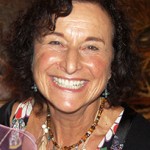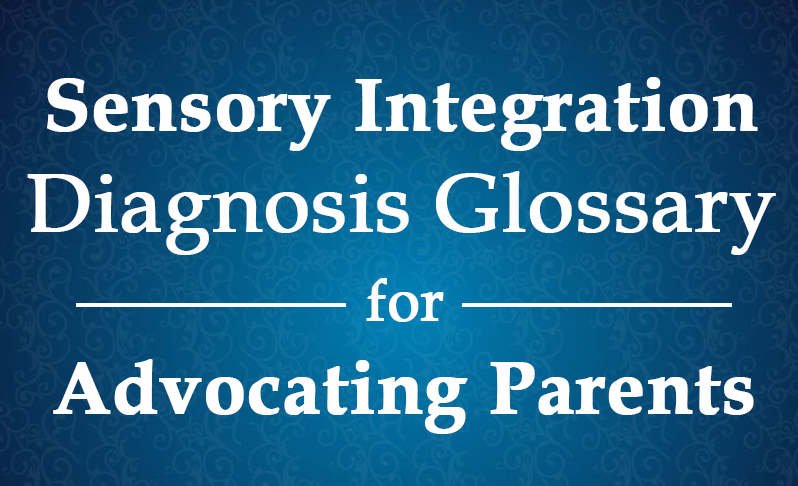This is the simplest sensory integration glossary I could devise to make it easier for parents to understand some of the common terminology they may encounter when they receive a sensory or autism diagnosis.
8 Aspects of Sensory Integration Diagnoses Explained
I want to underscore that none of the label terminology that refers to neurological or developmental struggles imply anything whatsoever about intelligence or capacity. Parents advocate for their sensory needs children by assuming that they are highly intelligent.
Autism and Autism Spectrum Disorders (ASD)
Developmental difficulties are expressed in a variety of ways by individuals who are “on the spectrum.” Frequently the struggle is in social and communication skills. This is characterized by varying degrees of difficulty in verbal and non-verbal expression. Repetitive behaviors are also associated with ASD. Conditions that are included on the spectrum are Rett Syndrome, Asperger Syndrome and Pervasive Developmental Disorder (called PDD-NOS, an acronym for Pervasive Developmental Disorder Not Otherwise Specified). Aspects of ASD are motor coordination and physical and health issues like sleep problems and gastrointestinal disturbances. There are many kinds of autism. Research into causation and treatment is ongoing. Do not accept assumptions about autism. Pay attention to your child no matter what diagnosis is suggested.
Bioelectrical Human Field
The human body has an electrical field that can be measured. Its electrical charge is emitted by cells, tissues and membranes. Electroencephalograms, fMRI’s and similar technologies read the bioelectrical field to identify illness or structural irregularities. Meridians, the pathways named in acupuncture and related therapies, are bioelectrical routes. Applied touch is one of the systems like acupuncture and acupressure that contacts this field to promote nervous system balance and sensory integration. New research investigates the relevancy of the bioelectric field in addressing sensory integration.
Dyslexia or Developmental Reading Disorder (DRD)
New terminology will likely evolve for this spectrum of difficulties with understanding symbols. Dyslexia refers specifically to an inability to recognize the symbols used to interpret language but similar disorders may be about the symbols used to understand math or handwriting. The neurological processing of symbols does not occur in a way that allows the individual to process the information those symbols are intended to relay. This struggle is not in any way a reflection of intelligence. This is purely a symbol processing disorder. Healthy compensations are now in place to minimize the limitations and maximize the gifts of dyslexia.
Learning Challenged or Learning Disabilities
These are umbrella terms that can encompass a wide variety of learning difficulties. Sometimes, challenges are labeled hyperactivity or attention deficit (ADHD is the acronym for these). Learning challenges can be in the category of focus and comprehension or they can be with specific skills like reading (dyslexia), writing (dysgraphia), math (dyscalculia) or other skills. There is unquestionably an interface between learning challenges and sensory processing struggles. Sorting through the developmental, physiological and processing aspects of learning challenges can unearth the deep seated needs of the child and lead the way to enhanced academic experiences.
Neurodiversity
Neurodiversity does not describe any particular condition. It embraces neurological uniqueness and the different ways that individuals express intelligence. Some people with learning challenges or sensory difficulties prefer to be called neurodiverse. Many believe there are fewer stigmas when this word is used. Neurodiverse is used in contrast to neurotypical which is the word that describes those who express what is considered to be a more normal development though some would argue that everyone is neurodiverse.
Sensory Integration
This term refers to the innate neurobiological process of integrating and interpreting sensory input. The input comes from within the person’s body and from the surrounding world environment. When this innate process is unbalanced the person is said to have Sensory Processing Disorder (SPD).
Sensory Processing Disorder
This describes the neurological traffic jam of mixed or overloaded signals that prevents the brain from filtering and organizing sensory input. Under optimum conditions all the senses work together to promote understanding of who we are and how we are experiencing the world around us. The brain organizes sensory information, assigns meaning to it and sorts out appropriate behaviors accordingly. When this does not go smoothly there can be a painful struggle surrounding behavior. Sensory experience can be overwhelming.
The basic senses referred to in Sensory Integration and Sensory Processing Disorder are:
- Vision (or sight);
- Audition (or hearing);
- Tactile Stimulation (or touch);
- Olfaction (or smell);
- Gustation (or taste);
- Vestibular (or balance and movement); and
- Proprioception (or knowing one’s place in space).
All sensory input is bioelectrical. All our interactions flow out of sensory experience.
When certain processing difficulties are identified like Visual Processing Disorder or Auditory Processing Disorder they always relate to the difficulty the individual is having in discerning, identifying, filtering or sorting the related sensory information.
Trauma, Shock and Post-Traumatic Stress Disorder (PTSD)
Trauma describes what one has experienced when an overwhelming emotional event persists in its disturbance even after it is over. Shock is a much higher and more shattering order of magnitude of this experience such as what someone who has been in a war zone might endure. Post-Traumatic Stress Disorder (PTSD) is the diagnostic criteria for this psychological condition. When a child with sensory difficulties has also experienced trauma, such as being the child of a veteran who comes home with combat-shock or PTSD or when adoption from an institution is a factor, then trauma informed neurochemistry becomes interactive with neurodiversity. Some people experience the loneliness of being neurodiverse as traumatic. For others a diagnosis of autism or Sensory Processing Disorder is traumatic along with the process of finding resources. People who have lived a long time with sensory challenges not knowing there are resources for them also experience trauma.
Author
 Dr. Stephanie Mines is a psychologist whose unique understanding comes from her academic research as well as her extensive work in the field. Her stories of personal transformation have led many listeners to become deeply committed to the healing journey. Dr. Mines understands shock from every conceivable perspective. She has investigated it as a survivor, a professional, a healthcare provider, and as a trainer of staffs of institutions and agencies. Meet Stephanie.
Dr. Stephanie Mines is a psychologist whose unique understanding comes from her academic research as well as her extensive work in the field. Her stories of personal transformation have led many listeners to become deeply committed to the healing journey. Dr. Mines understands shock from every conceivable perspective. She has investigated it as a survivor, a professional, a healthcare provider, and as a trainer of staffs of institutions and agencies. Meet Stephanie.



